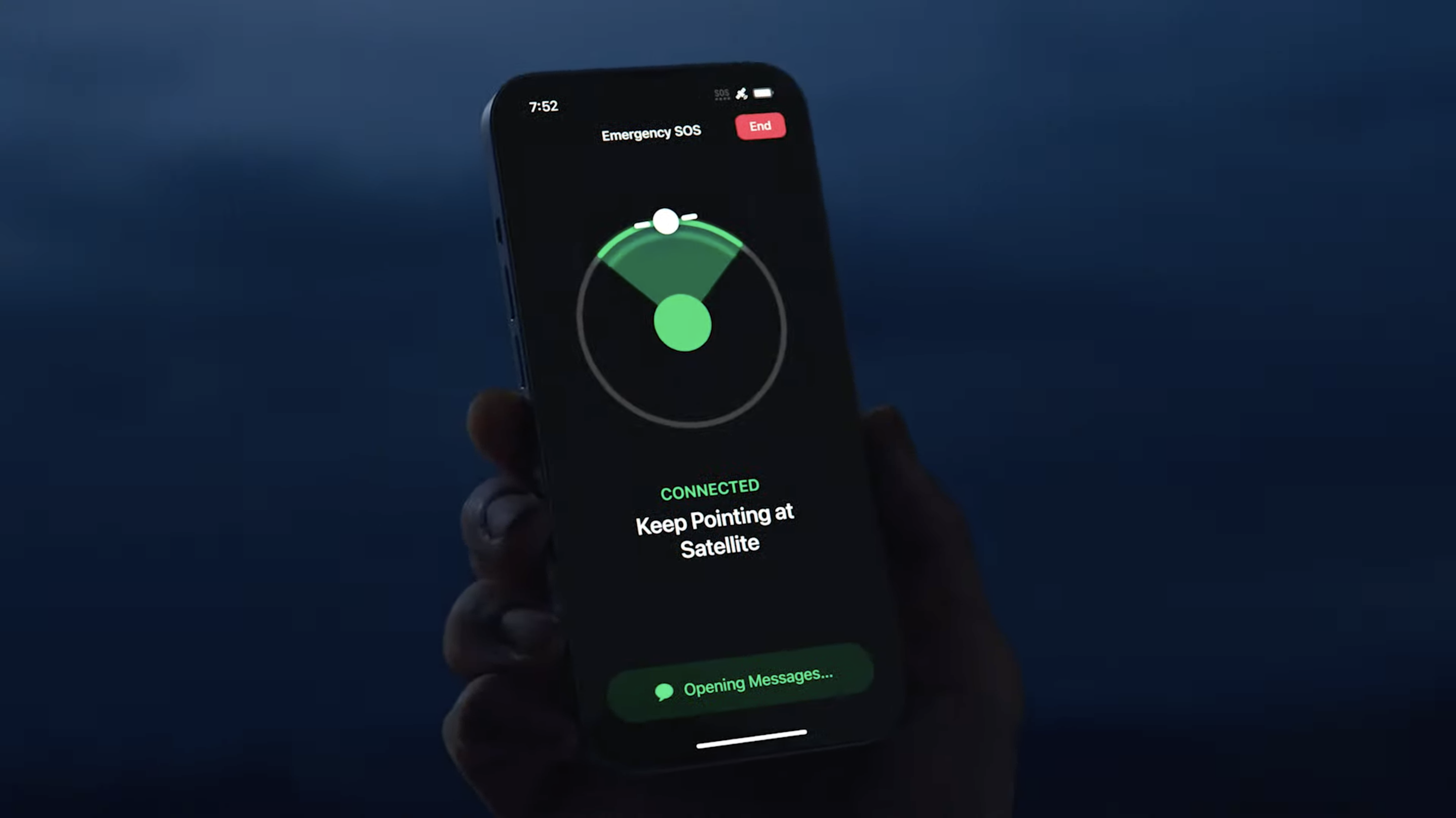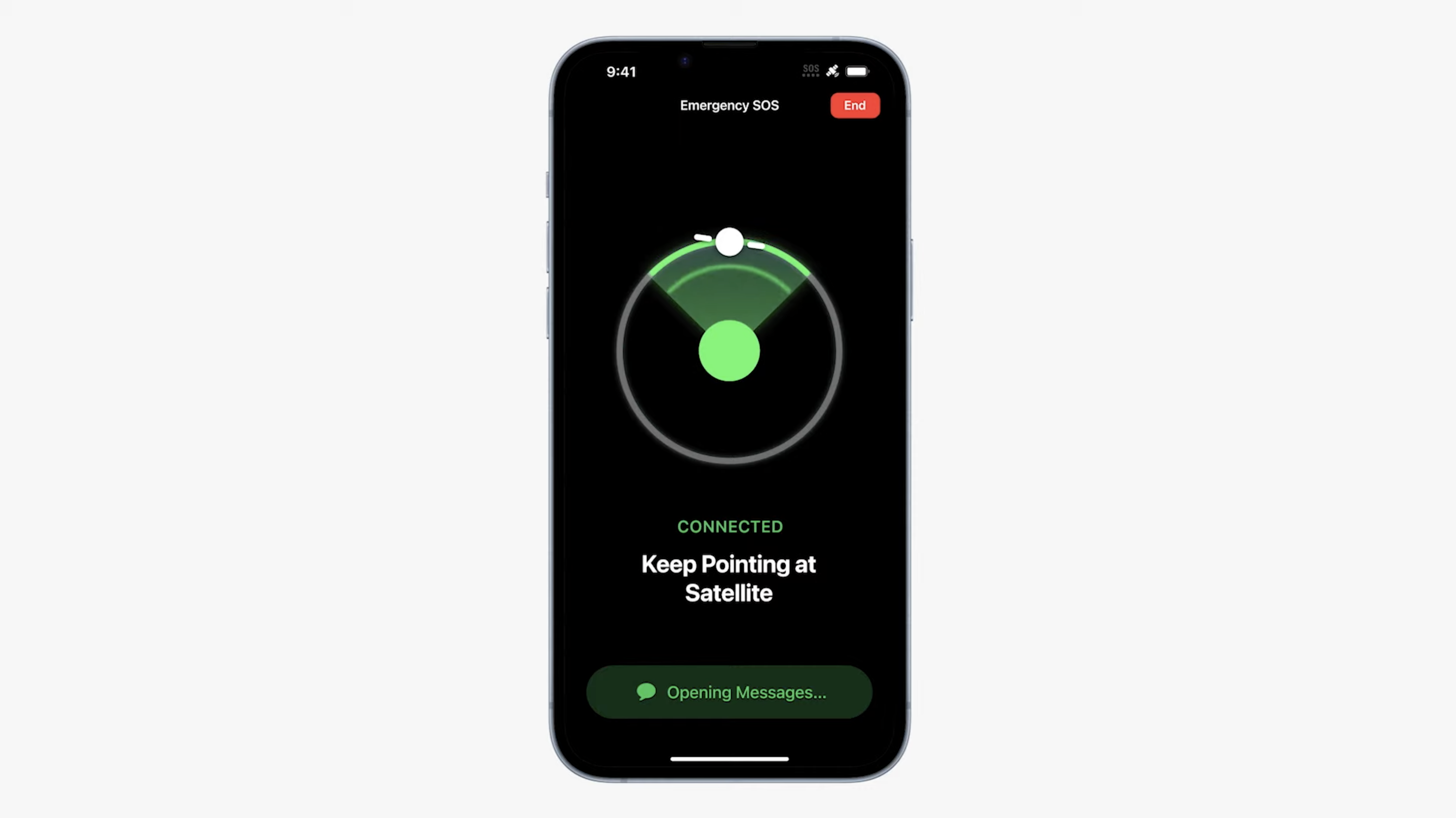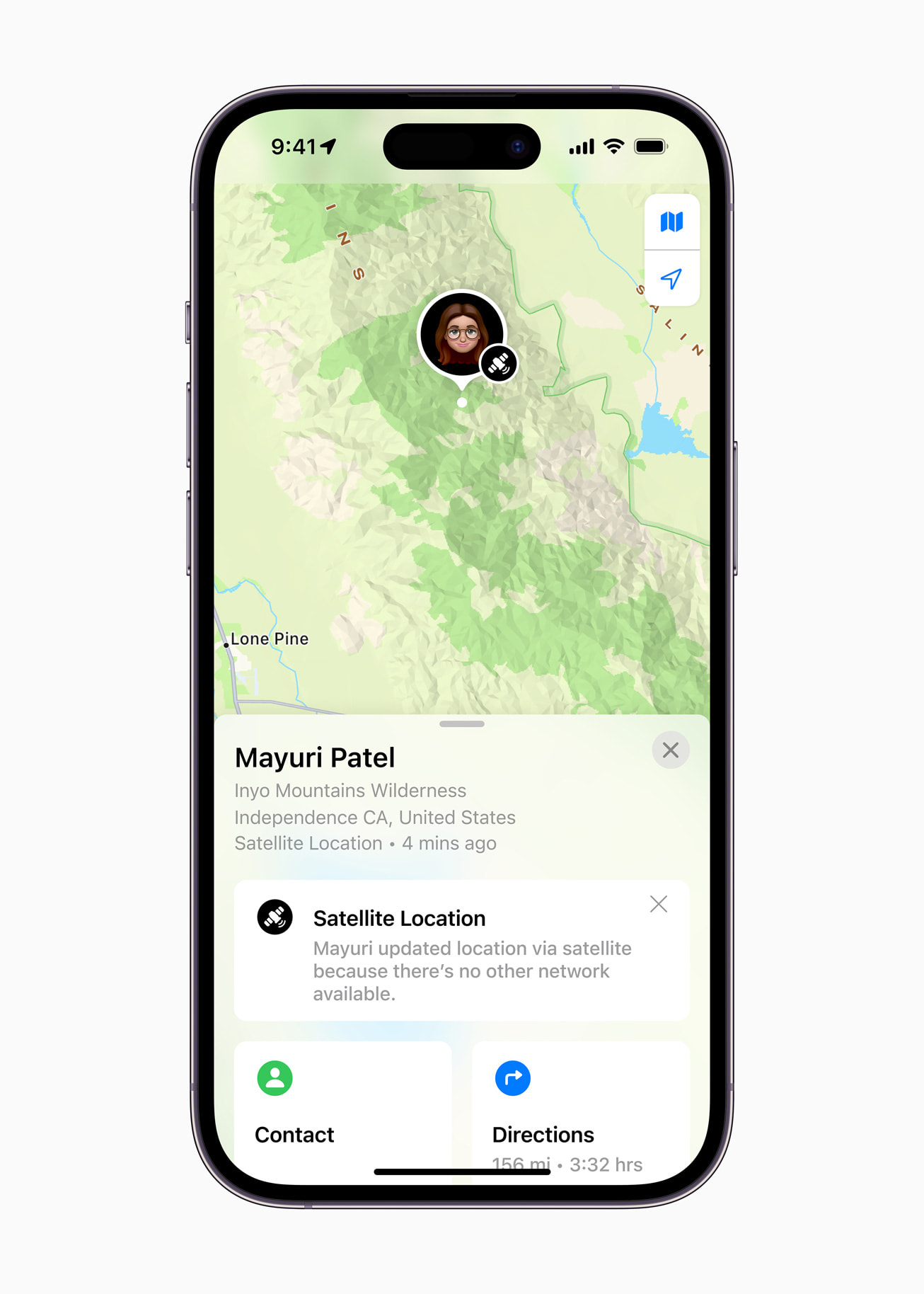iPhone 14 Emergency SOS via satellite — how it works and how it could save your life
Satellite connectivity makes its debut on smartphones with iPhone 14

Update: Emergency SOS just helped out in a a real-life rescue.
When introducing a new iPhone 14 lineup, Apple’s focus this year included a whole host of new and innovative safety features the company hopes you will never have to use. Chief among those safety-minded additions was Emergency SOS via Satellite, a mouthful of a name that describes a very critical iPhone feature.
Thanks to Emergency SOS via Satellite, you'll be able to connect to emergency services to send texts for help even if a cellular tower isn't nearby. And you won't need anything more than an iPhone 14 to stay connected.
That's quite a contrast from our image of bulky satellite phones with prominent antennas. Apple has done away with the need for those by building the connectivity right into its phone and adding software features that are designed to help you get a connection even when you're in a remote area.
This is the first time satellite connectivity will appear in a smartphone, connecting users to emergency personnel when there's no Wi-Fi or cellular around. Apple is partnering with satellite connectivity operator Globalstar to enable iPhone 14 users to send an SOS message to emergency responders in just a few seconds.
It's an impressive addition to the iPhone lineup, but it's important to know what you can and can't do with Emergency SOS via Satellite. (Forget about regular phone calls, for example.) Here’s how Emergency SOS via Satellite will work, along with a look at the technology that backs it.
Emergency SOS via satellite: How it works
Meant for emergencies occurring in remote areas where there is no cellular service or Wi-Fi, Emergency SOS via Satellite will be accessible on all four iPhone 14 models — the standard iPhone and iPhone 14 Plus in addition to the higher-end iPhone 14 Pro editions. The feature works in a similar way to the current Emergency SOS. Users will have to activate Emergency Text via Satellite on their iPhone 14 by pressing and holding the side button and one of the volume buttons on their phone until the option appears.
Get instant access to breaking news, the hottest reviews, great deals and helpful tips.
The current Emergency SOS feature directly calls emergency services for help using cellular service, but the update version for iPhone 14 will work silently different if cellular connectivity is not available. Instead of a phone call, users will send short text messages. That's because the limited satellite connectivity won’t allow data, voice or regular text.

Before all that, though, users will first have to use their iPhone 14 to connect to a satellite near them. According to Apple, Emergency SOS via Satellite works best in open spaces, with few obstructions around to block connectivity between your phone and the satellite.
Emergency SOS now offers a new orientation interface to give users prompts and onscreen instructions to connect to the satellite, since it naturally can’t be seen in the sky; users will also be told where to move to avoid blocked signals.
A direct view to the sky is key, and while a text message can take just about 15 seconds to get across, in ideal, clear conditions, it could take more than a minute if a person is under trees. With heavy foliage or obstructions around, Apple says users will not be able to connect to a satellite.

Since every minute is precious in an emergency situation, Apple has designed a quick questionnaire in the form of text prompts or answer presets to choose from. Since bandwidth is extremely limited, Apple also reduced messages by a third of their original size. The preset questions are meant to avoid back and forth conversations, relaying all the information responders need in one go.
That information covers what the emergency is, if anyone is hurt and your location, elevation and remaining battery life of the iPhone. Emergency SOS will also automatically send the user's Medical ID and emergency contact information stored on the iPhone.
The messages sent from an iPhone 14 using the satellite connection will not show up as blue (iMessage) chat bubbles, or green (text message), but as gray bubbles.
The iPhone 14 does more than just notify emergency services. If someone is going hiking or camping in a remote area and wants to send their location to their family — satellite connectivity can be tapped through the Find My app to share your location.

Apple has also synced the new Emergency SOS via satellite function in the new Crash Detection feature on the iPhone 14 series. Crash Detection relies on a new dual-core accelerometer capable of detecting G-force measurements of up to 256Gs and a new high dynamic range gyroscope. If a crash is detected and a user is in a remote location, they can access Emergency SOS via satellite to alert responders for help.
Emergency SOS via satellite: The technology behind it
Apple has pulled out all the stops for its new Emergency SOS via Satellite feature, and results on paper are pretty impressive. The company announced that it's invested $450 millionto provide the infrastructure required to support Emergency SOS via satellite. It has set up and is staffing new local relay centers that will be available to intercept messages — in case the user cannot connect to an emergency center or if the center only accepts voice calls and not text. Apple-trained specialists at that relay center will then call emergency services on the user’s behalf.

The technology smarts in the iPhone 14 lineup include an updated wireless chip that allows for satellite connection. For the extremely limited bandwidth with the satellite, Apple created a compression algorithm that makes text messages three times smaller for faster communication.
According to a recent SEC filing, satellite operator Globalstar, will provide all satellite and other resources to Apple and allocate 85% of its current and upcoming network to support the tech giant. Apple has also agreed to pay for 95% of the costs associated with new satellites, according to the filing. The iPhone maker is investing $450 million toward satellite infrastructure, with most of it going to Globalstar.
Emergency SOS via satellite: Availability
Apple has included the Emergency SOS via satellite feature on all its iPhone 14 models. The feature will launch in November this year and will require iOS 16, which is the software that will power the new iPhones.
The feature will be free for two years; after that, Apple could then bundle it with one of its subscription plans, though its unclear if that will be the case. As of now, Emergency SOS via Satellite will only be available in the US and Canada, though Apple warns that the feature will be less reliable in the Northern part of Alaska. As for countries beyond those, we may see more coverage before the end of the year, and more again in 2023, according to recent rumors.
Apple’s announcement of limited satellite connectivity in the iPhone 14 series comes after T-Mobile announced its partnership with SpaceX to create its own emergency satellite communication service. It could be available on many user’s existing phones but may not be launched till the end of 2023. With Apple heavily investing in the new field, we wonder if the iPhone 15 will build on the satellite connectivity feature the company has launched this year.

Sanjana loves all things tech. From the latest phones, to quirky gadgets and the best deals, she's in sync with it all. Based in Atlanta, she is the news editor at Tom's Guide. Previously, she produced India's top technology show for NDTV and has been a tech news reporter on TV. Outside work, you can find her on a tennis court or sipping her favorite latte in instagrammable coffee shops in the city. Her work has appeared on NDTV Gadgets 360 and CNBC.
